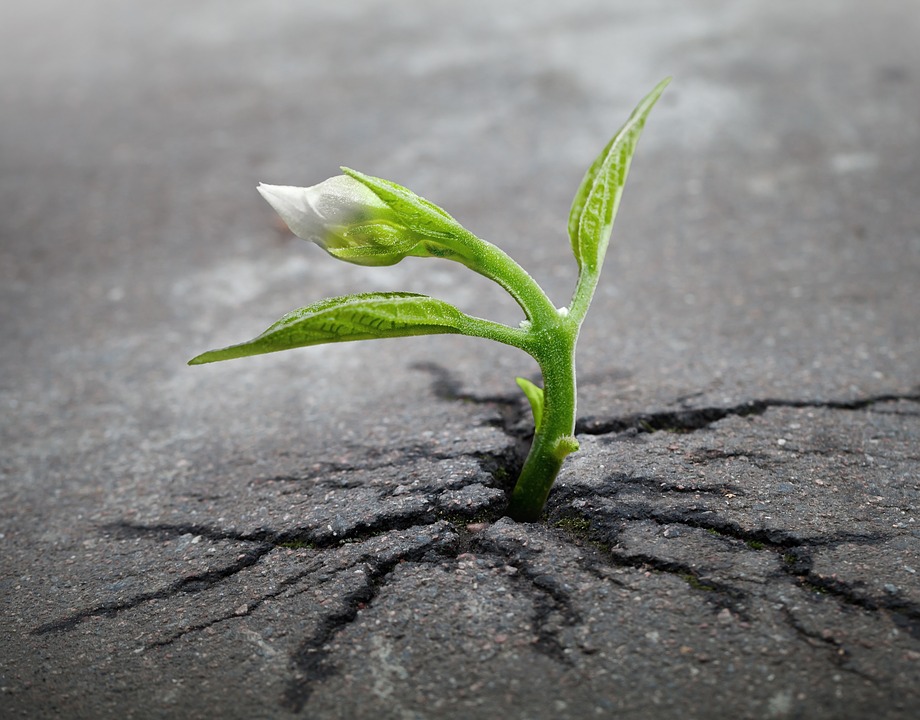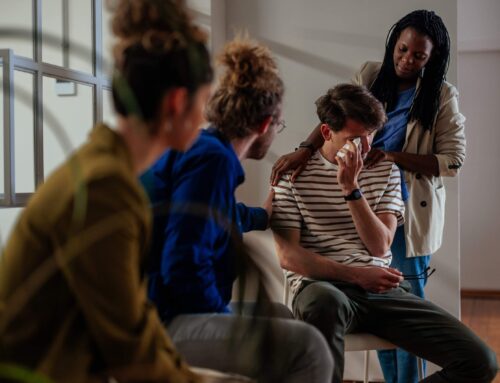
One In Ten: A Substance Use Interventionist Shares Advice, Insight And Reason For Hope
800 interventions. 35 years. When you speak to Don Sloane, Founder and Owner of Recovery Care Partner, you have no doubt that you’re speaking to someone who knows and understands substance use disorder and addiction intimately. Don is here to offer drug intervention advice and insight based on his long and successful career as a professional interventionist.
Don is a man in long term recovery and knows all too well the reality of this daunting statistic: one in ten Americans suffer from a substance use disorder. Nearly every family is touched by the disease and we have all seen it play out in our own communities. This is why Don has dedicated his career to helping families and businesses learn that addiction is not a curse but rather a disease and that through intervention there is hope and a path to recovery.
This April, as we acknowledge alcohol awareness month and substance use challenges at large, we interviewed Don for some drug intervention advice and about what he wishes more people knew about substance use disorder, what he views as warning signs that you or your child might be struggling, and what to be aware of when you’re researching treatment options for you or your loved one.
1. This April marks alcohol awareness month which presents an important opportunity to focus on this specific substance use issue. What do you wish more people knew about alcohol addiction?
Don Sloane:
In 2017, 65,000 lives were lost to opiates. Over 80,000 lives were lost to alcoholism. The opiate crisis is tragic, but it’s also important not to overlook other forms of substance use that are taking lives: alcohol addiction is the fourth most preventable cause of death in America after cancer and heart disease. It is the most treatable, but also the one with the fewest number of people seeking treatment and care. The reason is multi-layered. Alcoholism is tightly wound in decades of stigma; it’s deeply personal, cultural, psycho-emotional and because there can be a genetic predisposition, it’s often linked to generational use and is embedded in the fabric of families. The hidden tragedy is that substance use, like alcoholism, not only impacts the person who has the disease but it can have a particularly powerful ripple effect. It’s estimated that seven to eight people in a person’s community (peers, friends, family) can be directly and adversely impacted by someone who has an addiction.
2. What about alcohol addiction in young people?
Don:
There really is no distinction between alcoholism and addiction other than the drug of choice. For some, they may only use alcohol, others may use prescription or street drugs or some combination of both. Regardless of the drug of choice, addiction is an addiction. Roughly 10-20% of people use only alcohol in an addictive way.
What we do see is that for the 10% of the population that is genetically predisposed to substance use disorder addiction they tend to first present in late adolescence or as college-age adults. This time in life can be a key turning point. If there is a co-occurring disease that a young person is already struggling with, this can trigger or ‘turn on’ the addiction once they reach a certain age or face specific pressures – of which there is no shortage once a young person leaves home, goes to college or enters into the workforce for the first time.
3. What are some warning signs that your adolescent or young adult child may have an unhealthy relationship with alcohol?
Don:
This is best explained by recalling one of the most common things I hear from parents and families – a parent will come to me and say, “Don, my kid was an honor student with a full scholarship to play sports at X school,” (or something along those lines), “Now, I feel like I don’t know them anymore. Are we crazy here? How can they not see this?”
4. Does someone (a young adult, adolescent or adult) have to drink daily to have an alcohol use problem?
Don:
The short answer is no. The long answer is that there is a continuum between what we see as alcohol or substance ‘use’ and what we consider alcohol or substance abuse: the disease.
There are people (90% of the population, in fact) who use alcohol, who even self-medicate or soothe with alcohol, but who don’t suffer from an addiction.
Then there is an invisible line on that continuum — and it can sometimes be hard to see where that line is — where an individual crosses from having the ability to choose to drink to losing the option or choice of using. At that point, the substance use becomes chronic and progressive in nature. A key characteristic of the active disease is that it starts to manifest with adverse impacts on your life – at school, at work, at home. In this way, it is completely possible that someone can have an addiction but only drink three times a year, but when they do, they end up in jail or in the hospital. On the other hand, you could drink a glass of wine — or many — daily, and not be considered an addict at all.
5. What do you think makes the structure/philosophy of Recovery Care Partner particularly helpful for young people and families struggling with addiction?
Don:
Treatment professionals know how to effectively treat this disease (and there are strong statistics that indicate that it can be treated – a survey conducted on doctors who underwent a strict treatment plan in 2009, found that 80% were still abstinent after 5 years). Our approach (and that of places we are confident referring to and working with like The Dorm), is to recommend three key parts of establishing a sustainable recovery: participation in a 12-step program, an accountability structure and random screening. I would add to that: love, compassion, clarity and firmness. By clarity and firmness, I mean that it is possible to love your child/friend or partner to death if you don’t know how to draw the line and establish healthy boundaries and limits. Compassion can be saying, “We can’t have a relationship right now if you refuse the help you so desperately need.”
6. What challenges do you see in the field of substance use, addiction and recovery care, particularly as it relates to young adults today?
Don:
Two things:
• Marijuana. As marijuana becomes legalized, we’re seeing more and more young people using it than ever before. And many individuals don’t know that marijuana can ‘switch on’ mental health issues and even psychosis (for those who have a genetic predisposition). People forget that though alcohol is legal it remains the third biggest killer in the United States; just because something is legal doesn’t mean it can’t be harmful.
• Many families struggle to realize that the entire family unit might need support, not just the individual in isolation. Plucking a child from their dorm, or life, and sending them to treatment, only to return them to the same situation and dynamic, is nonsensical. I’m encouraged to see more service providers that keep families involved through family therapy or that go so far as to have them live with a child during therapy as part of a family restructuring.
7. On the flip-side, what makes you optimistic about supporting individuals in need today versus when you started Recovery Care Partners in 2009?
Don:
There is always, of course, a lot to be optimistic about, but right now the most glaring shift I’ve seen versus ten plus years ago is how much therapy and recovery programming has become big business. Many providers have opened up that simply have deep pockets. The treatment industry is estimated to be worth $35B in the United States and there are many groups and investors willing to take advantage of this and have acted irresponsibly. I see many, many families who have spent their hard-earned discretionary money with a treatment center, only to be left more fractured and desperate than before.
The good news is that there are plenty of ethical and value-based providers, many of whom are members of the National Association of Addiction Treatment Providers (NAATP) who has started lobbying on Capitol Hill in the hopes of enacting change and encouraging more oversight.
8. It’s an important point and a worrying trend. What recommendations do you have for families and young people who are trying to find legitimate and value-based care for addiction?
Don:
A few things:
• Trust your gut – I truly believe that you know when you’re being ‘taken for a ride’. Does the person on the other side of the call sound like they are interested in providing care, or taking your money? If one of the first or second questions they ask is, “What is your insurance?”, hang up. Plain and simple.
• Speak to your community and to individuals who have gone through what you have. Oftentimes, they will become the biggest advocates for the resources that have worked for them. Look up resources on Al-Anon or ask around in your 12-step groups. Also, look up providers on SAMHSA and NAATP that have been more thoroughly vetted.
9. Anything else you want to share that we didn’t already cover?
Don:
I do want people to know that there is hope — no guarantees — but plenty of hope.
When people look for treatment, be it for cancer or heart disease, they don’t hesitate or pause to seek out care or help, even if there is a 50% success rate. For many reasons I’ve covered, this is not the case with substance use addiction, but this doesn’t have to be the case.
And, please stop Googling. The best step is to seek out professional support. It’s there, I promise you.
Seek Out Professionals for Drug Intervention Advice and Staging
We hope Don was able to provide drug intervention advice as well as his unique insights as someone who has been involved in hundreds of interventions. With a sample size that large, there are certainly patterns to be seen and valuable information to glean. If you or a loved one is suffering from addiction, Don’s perspective offers a great deal of hope not just in achieving recovery, but in finding proper institutions that are there to help–such as Recovery Care Partner.
Table of Contents
- 1. This April marks alcohol awareness month which presents an important opportunity to focus on this specific substance use issue. What do you wish more people knew about alcohol addiction?
- 2. What about alcohol addiction in young people?
- 3. What are some warning signs that your adolescent or young adult child may have an unhealthy relationship with alcohol?
- 4. Does someone (a young adult, adolescent or adult) have to drink daily to have an alcohol use problem?
- 5. What do you think makes the structure/philosophy of Recovery Care Partner particularly helpful for young people and families struggling with addiction?
- 6. What challenges do you see in the field of substance use, addiction and recovery care, particularly as it relates to young adults today?
- 7. On the flip-side, what makes you optimistic about supporting individuals in need today versus when you started Recovery Care Partners in 2009?
- 8. It’s an important point and a worrying trend. What recommendations do you have for families and young people who are trying to find legitimate and value-based care for addiction?
- 9. Anything else you want to share that we didn’t already cover?
- Seek Out Professionals for Drug Intervention Advice and Staging







